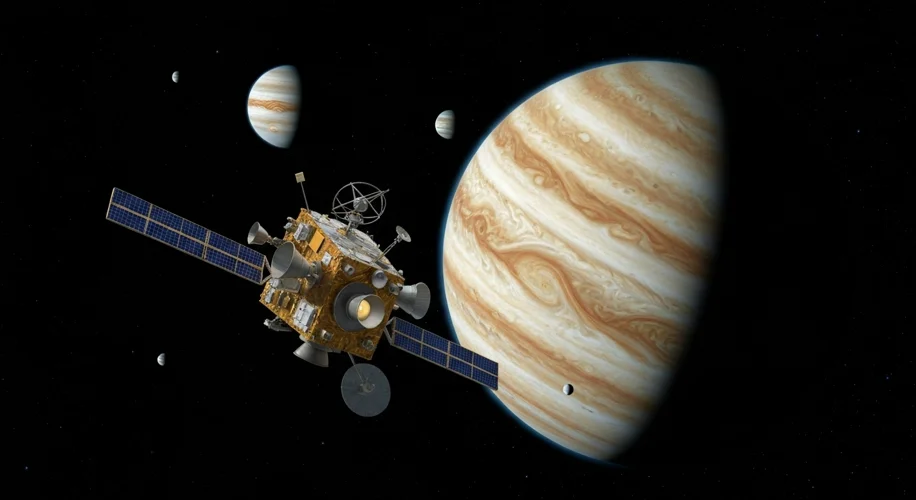In the grand tapestry of human exploration, the cosmos has always beckoned, a vast, silent frontier waiting to be unraveled. Today, September 2, 2025, marks a significant moment in this ongoing quest as the European Space Agency’s Jupiter Icy Moons Explorer, affectionately known as JUICE, continues its ambitious voyage. But JUICE’s journey is not merely about reaching its destination; it is a testament to the intricate ballet of celestial mechanics and the decades of scientific endeavor that paved the way.
JUICE launched in April 2023, a sophisticated harbinger of discovery, hurtling through the void towards the gas giant Jupiter and its enigmatic icy moons. These moons, particularly Europa, Ganymede, and Callisto, are believed to harbor vast subsurface oceans, igniting hopes of finding extraterrestrial life. However, to reach these distant worlds, JUICE must execute a series of complex gravitational maneuvers, a cosmic dance that includes a flyby of Venus.
This flyby is not a mere pit stop; it’s a crucial slingshot maneuver. By harnessing the immense gravitational pull of Venus, JUICE will gain the necessary velocity and alter its trajectory to eventually make its way to Jupiter. This technique, known as a gravity assist, has been a cornerstone of deep-space exploration since the dawn of the Space Age, allowing spacecraft to achieve speeds and reach destinations that would otherwise be impossible with their onboard propulsion systems alone.
To truly appreciate JUICE’s journey, we must cast our minds back to earlier expeditions that first unveiled the wonders of the Jovian system. The Pioneer missions of the early 1970s, followed by the groundbreaking Voyager probes in the late 1970s, provided humanity with the first up-close glimpses of Jupiter and its colossal moons. Voyager 1, in particular, captured the imagination with its iconic images of the Great Red Spot, a colossal storm raging for centuries, larger than Earth itself. 
Then came the Galileo mission, launched in 1989 and arriving at Jupiter in 1995. Galileo spent eight years in orbit, providing unprecedented data about Jupiter, its rings, and its magnetosphere, as well as conducting close-up studies of the Galilean moons. It was Galileo that provided strong evidence for subsurface oceans on Europa and Ganymede, fueling the scientific curiosity that would ultimately lead to missions like JUICE.
The fascination with Venus, though not a primary target for JUICE, also has a rich history in space exploration. The Soviet Venera program and NASA’s Mariner missions in the 1960s and 1970s bravely probed Venus’s hellish environment, revealing a planet shrouded in thick, toxic clouds with surface temperatures hot enough to melt lead. These missions, though perilous, were vital in understanding planetary evolution and the diverse conditions that can exist within our solar system.
JUICE’s Venus flyby is scheduled for September 2029, a testament to the multi-year planning and precision required for such missions. It is a delicate art, calculating these gravitational assists, ensuring the spacecraft arrives at the precise moment to harness Venus’s pull without veering off course or encountering unexpected hazards. This intricate dance highlights the collaborative nature of modern space science, involving teams of engineers and scientists across continents.
The JUICE mission represents more than just a technological feat; it embodies humanity’s insatiable drive to explore, to push the boundaries of knowledge, and to seek answers to profound questions about our place in the universe. As JUICE continues its long journey, it carries with it the legacy of pioneers like Galileo and the Voyagers, and it whispers promises of new discoveries yet to be made. The data it will eventually send back from the Jovian system will undoubtedly reshape our understanding of planetary habitability and the potential for life beyond Earth.
The JUICE mission is a powerful reminder that even as we gaze at the stars, our most profound journeys often begin with a deep understanding and respect for the celestial mechanics that govern the cosmos, lessons learned from the bold explorations of yesteryear.

